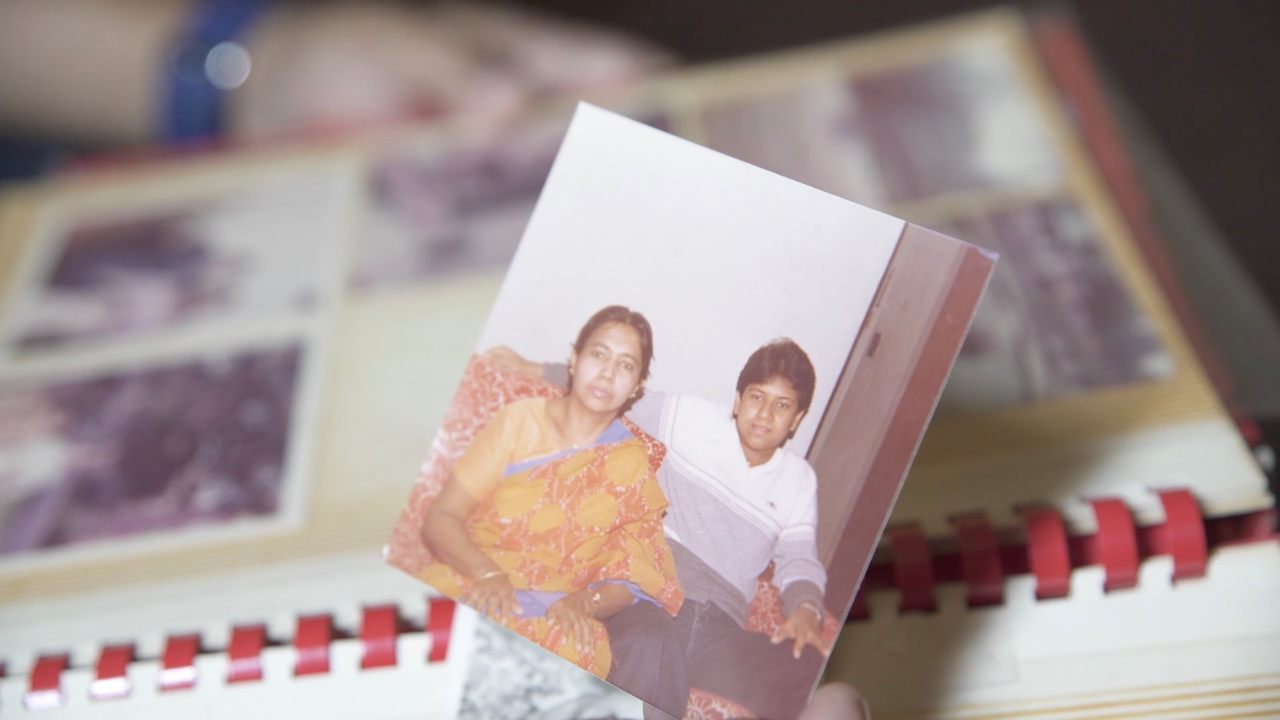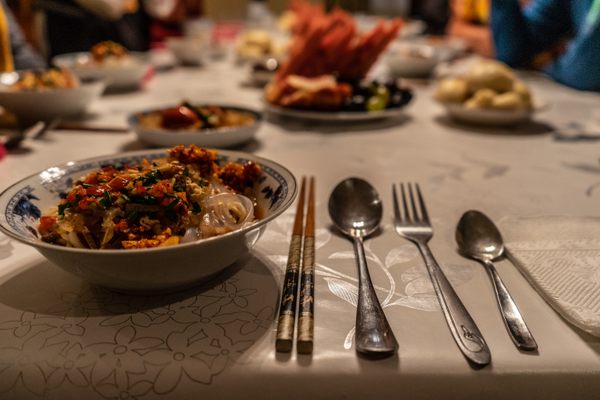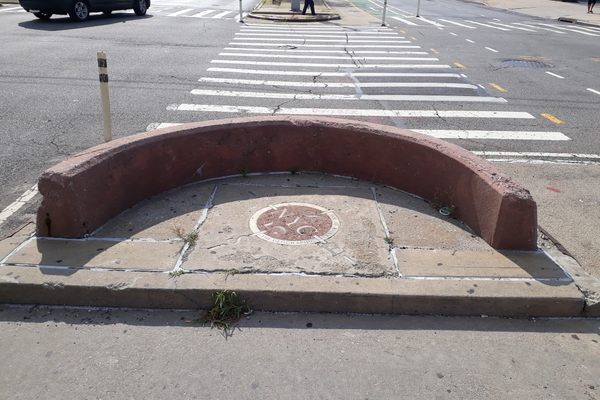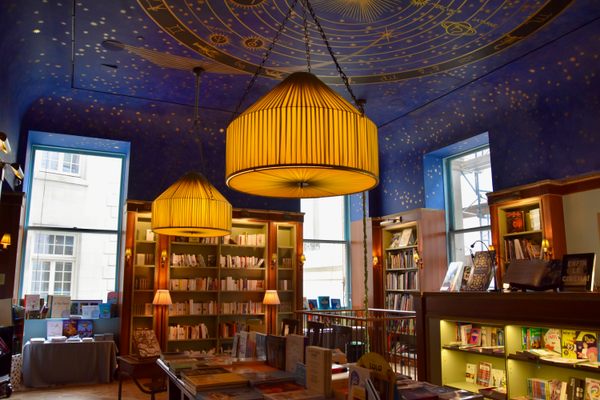The Quest to Collect the Stories of Bengalis in Harlem
The project has spanned decades and continents.
Alaudin Ullah has spent more than 20 years collecting untold or overlooked stories of the earliest South Asian immigrants to America, their Black and Hispanic wives, and their descendants, particularly in New York. It’s a research project, but also a personal one: The project has been a way for him to understand his own story, too—and his father’s.
Ullah’s dad, a Bengali sailor named Habib Ullah, moved to America in 1924. He didn’t speak much English and couldn’t read or write. But when his ship docked in Boston, Habib stayed behind and eventually made his way to New York, where he found a job as a dishwasher. In East Harlem, he met and married a woman named Victoria Echevarria, who had recently migrated from Puerto Rico. After Victoria’s untimely death, Habib raised their son, Habib Jr., but sent their toddler daughter to live with her mother’s relatives and friends. In the 1960s, Habib returned to his village for the first time in 40 years. British colonial rule in India had ended and the country was partitioned. Habib’s village in Noakhali had become a part of East Pakistan, and Habib married a young Bengali woman named Mohima. The two moved to Harlem and had two sons, including Alaudin.
The younger of the two, he was in his early teens when his father died. Ullah had known his father as “an old, decrepit man with a cane,” he says, and resented him for his parents’ age difference, for abandoning his half-sister, for dying. Mohima gave Ullah no answers. He and his mother had a volatile relationship. She felt isolated in the public housing they lived in, and struggled to raise her sons alone.
Ullah recalls his family being the only Bengalis in the predominantly Black and Puerto Rican neighborhood, and says he was bullied growing up. He hated feeling like an outsider. But there was a time, he knew, when mixed Bengali families—like his half siblings—lived in an ethnically diverse Harlem. In the early 20th century, Harlem became a nexus of African American communities arriving from the American south, as well as immigrants from the Black, Hispanic, and Asian diasporas. Bengali seafarers moved from Manhattan’s waterfronts to the Lower East Side and Harlem, where the undocumented immigrants could blend in and remain undetected by white authorities. By the 1950s and 60s, many of those families had moved to the Bronx, New Jersey, Staten Island, Long Island, or even farther away. Ullah remembered that on some Sundays and holidays, the families would gather to cook and share Indian food.

Over the years, local memory of this vibrant community started to dim. In 1965, a change in U.S. immigration law drove a large number of South Asians—especially highly educated people—to the United States. These newcomers were often perceived to be “model minorities,” overshadowing undocumented immigration from the subcontinent. Along the way, and perhaps due to casteism, classism, colorism, and anti-Blackness within some South Asian communities, the history of their earliest immigrants to America was lost.
But by the 1990s, a second generation South Asian Americans in New York came together and formed a lively community in the arts and academia. In this scene, Ullah, a comedian and actor, met Vivek Bald, then a DJ and filmmaker. The ethnographer Karen Leonard had just published a study documenting another obscure South Asian history of the early 20th century—Punjabi immigrants who had married Mexican women in rural California. But stories like Habib’s were unheard of outside their communities.
Ullah and Bald decided to collaborate on a documentary film on the first wave of South Asian immigrants to the U.S., and their families. Bald began to look for records of this history, and found that written chronicles were nearly absent. But there were fragments of information—newspaper clippings, ships’ records, marriage certificates—about the immigrants’ lives. The first wave of Bengali immigration, he found, went back to the 1880s.
In his 2013 book, Bengali Harlem and the Lost Histories of South Asian America, Bald explains how it had roots in colonialism. In 19th-century India, British policies gutted the handicraft industry and its local markets—but in America, “Oriental goods” (such as embroidered cotton and silk, perfumes, spices, rugs, and handbags) were symbols of sophistication in middle-class homes. So Bengali men from villages north of Calcutta came to America as traders and peddlers, and some of them settled in New Orleans and across the American South, where they lived in segregated communities and tended to marry Black women while selling their wares in white neighborhoods.

Life aboard British steamships was “worse than working in hell” according to a 1920 news report quoted in Bald’s book—and by the 20th century, Bengali seamen like Habib were deserting their posts and seeking work in the Northeast and industrial Midwest. Between 1910 to the 1940s, Bald estimates, thousands of primarily Bengali Muslim men jumped ship. The majority of them returned to the subcontinent, but “somewhere in the high hundreds ended up settling in the New York/New Jersey area, Detroit, and elsewhere in the East and Midwest,” says Bald, now an associate professor of comparative media studies at MIT. In New York, they opened restaurants or set up small businesses selling herbs and spices. Habib and his first wife, Victoria, ran the Bengal Garden restaurant for two years in Midtown Manhattan. In the mid-1950s, Bald says, the community “across all five boroughs plus New Jersey, likely comprised between 1,500 and 2,000 men, women, and children.”
The research duo also interviewed the people who remembered the experience firsthand, including Habib’s friends, 12 to 15 Bengali seamen who had migrated to New York. “I asked a lot of tough questions about my father,” Ullah says. “They were screaming at me. They thought I was being ‘too American, disrespectful.’” They spoke instead with great affection of Habib’s tenderness, his generosity. Those comments recast some of what Ullah remembered. “I always knew my father as a drill sergeant,” he says.
For the documentary film, he and Bald raced to speak to as many of the aging immigrants as they could. “The clock was ticking,” Ullah says. Between 1998 and 2008, many of the men died. They interviewed some of the men’s wives and a number of their children—including Ullah’s half-brother, Habib Jr.

Bald was unable to locate stories of the waves of Bengali arrivals in any existing immigration histories. He decided to delve into the archives at the American Studies graduate program at New York University, and turned his PhD dissertation into his 2013 book. The Ullahs figure prominently in the book, and are featured on its cover. In the text, Bald made connections between the lives of the Bengali immigrants and larger historical shifts; Ullah was determined that their documentary focus on the emotional journeys.
His father’s friends had never really opened up about their experiences and were not inclined to do so now, Ullah says. But he would ask them about food, music, and women, which became entry points into their lives. He learned that his father had “a life that was a secret”—he was a good-looking man who, after his first wife’s death, “was sleeping around a lot.” Loneliness drove him to Noakhali in search of a wife.
Seeking answers, Ullah decided to visit Bangladesh, which had liberated itself from Pakistan in 1971, a few years after Ullah’s parents wed. In Noakhali, Ullah’s aunt told him that his mother, Mohima, had escaped an abusive child marriage before she met Habib. She had thrown scalding water on her first husband’s face and returned to her village. She had decided to marry Habib, nearly 40 years her senior, on the condition that he would give her “an American son,” his aunt recalled. Ullah realized that for Mohima, this was “like winning the lottery,” he says. When he learned about the reason behind his mother’s choice, Ullah adds, “I broke down and cried because in her mind, she was going to have Bill Gates and she ended up with me.”

Bald and Ullah’s film, In Search of Bengali Harlem, is forthcoming on PBS this year. The film, Ullah says, is about an “oblivious American who is trying to make sense of his life, not ever seeing his parents as anything more than a burden”—and certainly “not as humans having a past life.”
The catharsis that Ullah experienced as he delved deeper into the story was echoed by several other descendants who encountered Bald’s book. It was “like waking a sleeping giant,” Ullah says. The pair began getting emails and calls from descendants of other Bengalis all over America. Like Ullah, they hadn’t known much about their parents’ lives—especially their fathers’. What little they did know, they had often forgotten. “We were tapping into memory we had just put away in a safe box and hadn’t known how to enter,” Ullah says.
At a 2013 event celebrating the book at the Schomburg Center for Research in Black Culture in Harlem, the room was filled with “Black faces, Bengali faces, Puerto Rican faces,” Ullah says. Some guests were people they had interviewed, and others had chanced upon the event. When Johlika Ali clicked a link to the event someone had sent her, she was surprised to find a photograph of the Bombay India Restaurant, which her parents had opened in 1958 and ran for three decades on 125th Street.
“I knew all these people existed and my dream was to bring them in one room,” Ullah says. It turned into “a sort of emotional, confessional space,” he says.
Since then, Ullah has had countless conversations with other descendants as they read the book, and he continues to get in touch with old family friends. “Everyone contacts me,” says Ullah. “It’s been gut-wrenching.”
A friend of his childhood friend Zuleika Abdul called him crying. “Her dad was Bengali and she had never embraced her Muslim roots, and when she read the book… for the first time in 30 years she had thought about that,” he says. “She said, ‘Can you imagine these men having Black daughters and Black sons, barely speaking English?’” They talked about the shame they had felt, and the guilt around that shame. Bald has built a digital archive at MIT of all the material that has emerged as more descendants share their stories.
Abdul’s parents, Frenchy and Abbas, lived in Astoria and were mentioned in the book because Frenchy had become a kind of matchmaker in the community. In 2016, Ullah was finally able to contact Abdul, with whom he had lost touch. They talked about Ullah’s half-sister, who had lived with Abdul’s family for many years. When he interviewed Abdul, Ullah realized his sister had never gotten over their father’s rejection. “You don’t realize the domino effect on people’s lives,” he says. “I had issues with my father; I didn’t know my sister had bigger issues with my father.”
“The beauty of the book is it has reconnected so many people. And we can talk about our fathers and what being raised mixed means,” Abdul says. “It wasn’t fashionable to be mixed back then.” Bengali Harlem and Ullah’s photos from Bangladesh nudged Abdul to visit India. “I just wanted to go and touch base with my roots,” she says. “When I went to India, we bought all of the traditional clothing… and we just embraced our heritage.”
“When we’re young, we see our parents as FOBs,” says Ullah, who is now doing a playwriting MFA at Columbia University and working on projects from the parallel perspectives of first-generation Americans and their parents. “They try to tell us, maybe once, their story. We’re disconnected. I want to keep that emotional umbilical cord to our parents.”































Follow us on Twitter to get the latest on the world's hidden wonders.
Like us on Facebook to get the latest on the world's hidden wonders.
Follow us on Twitter Like us on Facebook